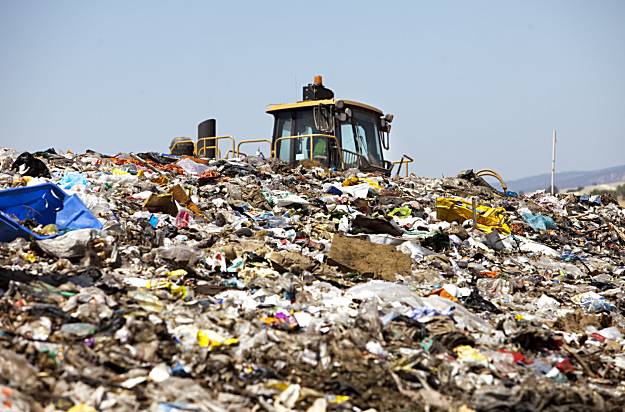 In California, voters just ensured the continuation of 4 years of public policy work on creating a low carbon economy by voting “No” on Prop 23. Apparently, Californians want to lower our carbon footprint, and yet, on any given day I can sit at the Starbucks near my house in Pleasanton, and watch enumerable garbage trucks carrying waste from San Francisco down the 580 east, emitting carbon and all kinds of air pollution throughout the Bay. For a city that touts its recycling rate as one of the highest in the nation, they are still sending a lot of garbage and greenhouse gas emissions to their neighbors.
In California, voters just ensured the continuation of 4 years of public policy work on creating a low carbon economy by voting “No” on Prop 23. Apparently, Californians want to lower our carbon footprint, and yet, on any given day I can sit at the Starbucks near my house in Pleasanton, and watch enumerable garbage trucks carrying waste from San Francisco down the 580 east, emitting carbon and all kinds of air pollution throughout the Bay. For a city that touts its recycling rate as one of the highest in the nation, they are still sending a lot of garbage and greenhouse gas emissions to their neighbors. It makes me wonder how San Francisco, and other urban areas in the state will comply with AB32. Will the carbon they emit by outsourcing their trash be transferred to rural areas of the state? I certainly hope not.
According to the San Francisco Chronicle, I may only have 4 more years to watch the convoy of San Francisco trash on the 580, because the Board of Supervisors is considering moving their dump site to Wheatland, a little bitty town in Yuba County of about 3,000 folks, located 125 miles away from the Golden Gate. This is up in Senator-elect LaMalfa and Assemblyman Logue territory. Reports in the Chronicle say that there are Wheatland residents opposed to the plan. I don’t blame them; they didn’t buy ranches and farms in Yuba County just to have trainloads of trash delivered to their doorstep.
A lot of people may think that urban areas like San Francisco have no choice but to send their garbage out of the city limits, because they don’t have enough real estate to build landfills of their own. But the fact is that they could be building energy from waste (EFW) plants that need very little land, and not only eliminating their contributions to landfills, but also creating clean, renewable energy. When I attended the Republican National Convention in 2008, I toured and EFW plant in downtown Minneapolis. It is situated right across the street from a brand new major league baseball stadium that was cited and built long after the EFW was running. Amazingly, there was no smell, the site was pristine, and though the plant was incinerating tons and tons of waste each week, it just looked like a small, tidy manufacturing plant from the street – the whole property only took up an acre or so.
California already has a handful of EFW plants, and we should consider building more. The Miramar landfill is closing soon in San Diego, and before they start imposing on their neighbors with their garbage and air pollution the way San Francisco does, we need to get serious about managing our solid waste in the state.
To learn more, tune into my radio show, Go Green Radio, this Friday from 9-10 a.m. PST on www.VoiceAmerica.com. This week’s guest on Go Green Radio is Keith Weitz, manager of the Sustainability and Environmental Assessment program at RTI International. He specializes in solid waste management, energy technology assessment, global climate change research, and life cycle assessment. Mr. Weitz and the RTI team have been working with the U.S. EPA, the California Integrated Waste Management Board, and the World Bank to analyze the cost and environmental aspects of solid waste management systems since the early 1990’s.
***Photo Credit: Robert Durell / Special to The Chronicle

